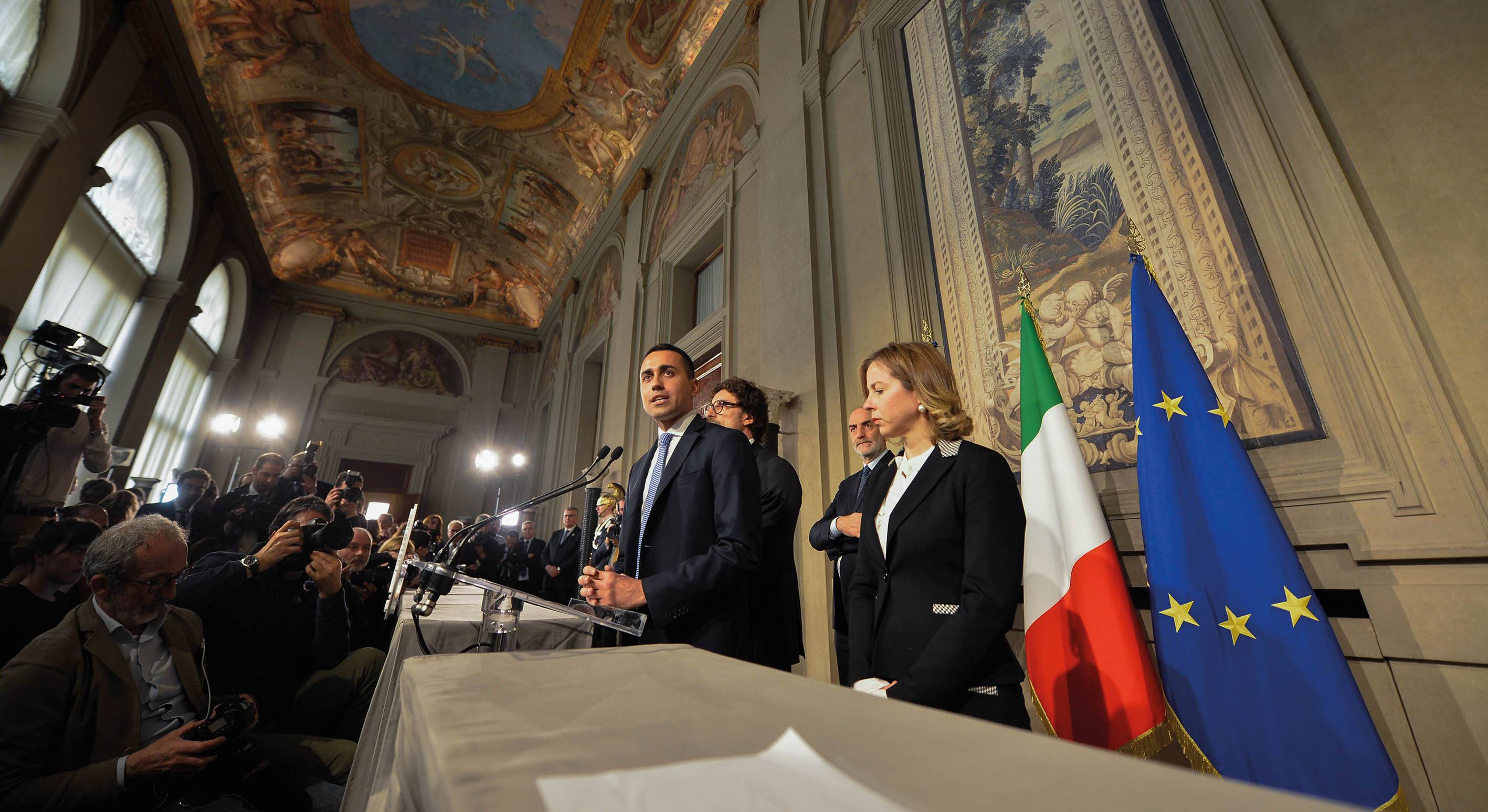Italy's anger management
More than a month after the elections, will the two populist parties that won most votes be able to set aside their differences and form a coalition
More than a month after Italy’s elections there’s no sign of a new government. The chaotic results of the 4 March polls left no clear majority and now the country’s president has the unenviable task of trying to cobble together a coalition.
The most likely – or least unlikely – outcome is thought to be an alliance of populist parties, in what’s being called a “coalition of the angry” between two former outliers riding a wave of public fury over high taxes and government corruption.
The Five Star Movement (M5S) and Lega Nord (Northern League) both drew unprecedented support in these elections, sending shockwaves through Italy’s mainstream left and right-wing parties, which have for decades taken turns in power. The traditional Italian political setup is crumbling, but it’s hard to see what kind of government will emerge from the dust.
Both M5S and Lega (its name shortened in December to create national appeal for the regionalist party) claim to have won a majority and the right to form a government. The populist M5S took more than 32 per cent of the vote, but Lega leads a right-wing coalition, including Brothers of Italy and Silvio Berlusconi’s Forza Italia, which together drew 37 per cent of the ballot.
On 4 April, President Sergio Mattarella began the first round of coalition talks. These are expected to drag on for weeks – especially if these two radically different parties are asked to reach some kind of agreement.
M5S, which claims to be a movement rather than a party, enjoys huge support across Italy’s south and central regions, with struggling voters protesting against high unemployment and corruption, and demanding more help from the state. Lega meanwhile is popular in richer northern parts of the country, especially with business owners opposing red tape and high taxes – although it’s better known for its hardline anti-immigration message.
An awkward tie-up between these two would be difficult to negotiate, and difficult to maintain. But many think it could happen as the two leaders have already found common ground.
Luigi Di Maio, M5S leader, and Lega’s Matteo Salvini were in agreement on new parliamentary speakers when the country’s hung parliament met last month for the first time since its election. The two are said to have shown “great rapport and co-operation” as they negotiated in a long series of talks and phone calls. Both carry an anti-establishment message, favour a more combative stance on the EU, and have pro-Russia factions – and many think an alliance between the two would be a “nightmare scenario” for Europe.
But Italy’s protest vote was not an anti-European one. Nowhere in the election campaigning was the prospect of Italy leaving the EU mentioned. Despite M5S, among others, blaming Europe and the common currency for worsening the country’s financial troubles, there is zero appetite among voters here for actually leaving the bloc.
M5S’s most attention-grabbing policy is a basic income – and in the days after the election results, voters in the southern region of Puglia were already asking at job centres about the payments. But this policy would be unworkable alongside Lega’s equally popular flagship policy, a promised 15 per cent flat tax rate for all.
While many M5S voters regard themselves as left wing and progressive, Salvini’s party has lurched heavily to the right – and has now pushed Berlusconi’s traditional right-wing Forza Italia onto the sidelines, leaving the scandal-ridden former president out of the spotlight for the first time in his 25-year political career.
Still, his influence may prove an insurmountable obstacle to an alliance between M5S and Lega, as Berlusconi and Salvini maintain close ties. He’s repeatedly warned Salvini to stick with his “natural allies” on the right instead of trying to negotiate with M5S.
Berlusconi, a convicted tax fraudster who leaves a trail of sleaze behind him wherever he goes, embodies the political establishment that M5S says it wants to wipe out. But Salvini needs his controversial ally, and a united right-wing bloc, for Lega to have a strong hand in negotiations.
As the talks began this month the right-wing parties presented a united front, insisting they would be the ones to name a prime minister in the new government.
Di Maio, who said M5S wants nothing to do with Berlusconi or a right-wing alliance, effectively told Salvini to ditch him or the deal is off.
If no deal can be reached, Mattarella may be forced to call another election.
Photo: M5S leader Luigi Di Maio speaking at the end of the last round of talks, which failed to form a new government in Italy ( Silvia Lore/PA)
